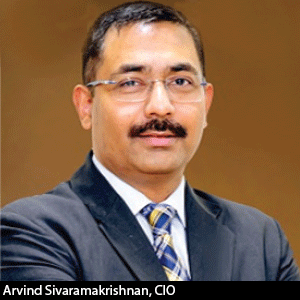 How Do You See The Indian Healthcare Sector Advancing In Terms Of Technology Adoption?
How Do You See The Indian Healthcare Sector Advancing In Terms Of Technology Adoption?The Indian healthcare industry has grown by leaps and bounds, developing its efficiency in providing a wide array of primary, secondary and tertiary care. The demand and expectations from the healthcare industry has also surged in tandem. Today, it is increasingly important to devise an accessible and affordable care delivery ecosystem with an undivided attention towards quality standards. The underlined circumstance in turn has directed some critical questions to the healthcare sector — How do we provide healthcare to the quantum of people? How do we ensure the care delivery is accessible and affordable? How do we monitor the quality?
In the given framework and setting, the need for technology implementation has been widely recognized by the industrial players and currently we see a varied level of maturity. Although, the Indian healthcare technology evolution is in a nascent stage, the overall environment seems promising with an aggressive growth trajectory. Looking forward, I believe that India will race ahead with a strong enablement of mature technology at size and scale.
Health Care Data Come From Perplexing Sources With Various Formats Like Structured Data, Paper, Videos, Multimedia, And Digital Pictures. However, Extracting This Data Is A Real Challenge. How Should Data From Different Sources Be Extracted And Channelized For Diagnostic Accuracy?
With a number of technologies being implemented at different points of the healthcare operation line, effective management of data has evolved as a concern for the healthcare industry. However, the biggest problem lies in the lack of binding regulations and guidelines. The dearth of solid monitoring in governing statutory structure opens up issues of privacy, violation, misuse, and unethical usage.
Effective data management in the presence of robust statutory frameworks leads the industry to plethora of opportunities. For example - as industry traverses towards data driven care delivery, the opportunity for speed to diagnose widens. When the presentation of complaints by the corresponding patient is analyzed in terms of the relevant cohort, it delivers an additional insight on potential diagnosis and treatment patterns. This in turn ensures a quicker regime of treatment, benefiting a patient with enhanced care.
Furthermore, data analytics can pave avenues for population analytics on patterns and prediction, aiding the healthcare industry to keep the nation genuinely healthy. Starting with outbreak of disease to non communicable diseases, population analytics can give a firsthand idea about what the population is susceptible towards, and devise a unique solution to mitigate the same. Looking beyond this, the available data will further positively influence the growth of the Indian IT industry.
While helping the nation to churn out predictive algorithms, AI, ML, cognitive learning, this data can also be fruitful to the healthcare industries across the world for several aspects. By all of this being made available in India, the nation is definitely poised to evolve into an attractive medical tourism destination where people from other parts of the world can come and get required treatment.
The Healthcare Industry Is Now Exploring The Possibility Of Developing Mobile Strategies For Medication Administration, Clinical Decision Support Alerts, And Clinical Documentation And Care Team Assignments. The Complexity Of Integration And Implementation Remains A Challenge. How Are You Handling This Situation For Apollo?
Adopting a mobile strategy must not be viewed in an isolated form. The outlook should be to enable an integrated approach, by the deployment of the right technology in the right position. Moreover, healthcare being a sensitive industry, technology adoption must not be performed compromising the longitudinal record of the patient or the treatment pattern.
Narrowing down, it is about a user using a device and a technology that enables them to effectively perform their workflow without compromising integrity, quality, patient care, or losing operational efficiency. Hence, mobiles must be integrated with the total IT infrastructure. This necessitates robust connectivity between mobile devices and the organizational networks in a secure form.
Furthermore, it is also imperative to assure that there are no inefficiencies in the telecom transmission, as this may affect the potential delivery of care. From a patient centric point of view, the mobile touchpoint must be designed to optimize the direct and indirect care delivery. The introduction of telehealth and telemedicine, mobile health, wearable devices, connected at-home devices, has created new avenues for healthcare delivery.
However, Integrating This Information Across The Ecosystem For A Unified View Is Critical To Establish. How Can Patient Information Be Connected Across An Entire Digital Ecosystem?
Connecting the devices is a major challenge in front of the industry, and I believe, we are not performing to our best of potential as most of the devices are working in isolation. Having these devices connected to each other increases the operational efficiency and aids the healthcare industry to ensure enriched patient care, safety and delivery. Most importantly, connected devices will help to correlate the one information with the other and present it in an episodic or longitudinal form.
To attain the same, the industry needs to institute a standardized outlook. Starting with standards of communication protocol, terminologies, and vocabulary, the healthcare industry must establish standardization to present a single view in a longitudinal manner. Although in a nascent stage, comfortable to state that the problem statement is acknowledged by the industrial players, and we are working to develop strategies for attaining interoperability among devices.
How Do You See Healthcare IT Evolving In The Future? With Multiple Innovations Taking Shape, Which According To You Will Impact The Healthcare Industry Most?
There is no straightforward answer as each technology comes with its own set of possibilities. Today, there are lots of available technologies that are proving beneficial for the operations of the healthcare industry. Starting with cloud technology, it provides that seamless way by which an organization can expand and provide its services. Mobile strategies are now aiding the industry to extend the reach of care delivery.
"Social media is also effective in terms of passing constructive information on wellness and treatment patterns in a credible manner"
Social media is also effective in terms of passing constructive information on wellness and treatment patterns in a credible manner. Moreover, cutting edge technologies like — robotics, 3D printing, AR, VR, and more will play a significant role in optimizing the forms of care delivery. However, these technologies must not be viewed in an isolated form; the need lies to integrate the technologies with a vision to provide better healthcare service.
Arvind Sivaramakrishnan, CIO, Apollo Hospitals
Arvind is a roaring successful Chief Information Officer, Digital Transformation Expert & Management Consultant who is responsible for IT strategy and implementation, across the Apollo Hospitals group.
Narrowing down, it is about a user using a device and a technology that enables them to effectively perform their workflow without compromising integrity, quality, patient care, or losing operational efficiency. Hence, mobiles must be integrated with the total IT infrastructure. This necessitates robust connectivity between mobile devices and the organizational networks in a secure form.
Furthermore, it is also imperative to assure that there are no inefficiencies in the telecom transmission, as this may affect the potential delivery of care. From a patient centric point of view, the mobile touchpoint must be designed to optimize the direct and indirect care delivery. The introduction of telehealth and telemedicine, mobile health, wearable devices, connected at-home devices, has created new avenues for healthcare delivery.
However, Integrating This Information Across The Ecosystem For A Unified View Is Critical To Establish. How Can Patient Information Be Connected Across An Entire Digital Ecosystem?
Connecting the devices is a major challenge in front of the industry, and I believe, we are not performing to our best of potential as most of the devices are working in isolation. Having these devices connected to each other increases the operational efficiency and aids the healthcare industry to ensure enriched patient care, safety and delivery. Most importantly, connected devices will help to correlate the one information with the other and present it in an episodic or longitudinal form.
To attain the same, the industry needs to institute a standardized outlook. Starting with standards of communication protocol, terminologies, and vocabulary, the healthcare industry must establish standardization to present a single view in a longitudinal manner. Although in a nascent stage, comfortable to state that the problem statement is acknowledged by the industrial players, and we are working to develop strategies for attaining interoperability among devices.

The introduction of telehealth and telemedicine, mobile health, wearable devices, connected at-home devices, has created new avenues for healthcare delivery
How Do You See Healthcare IT Evolving In The Future? With Multiple Innovations Taking Shape, Which According To You Will Impact The Healthcare Industry Most?
There is no straightforward answer as each technology comes with its own set of possibilities. Today, there are lots of available technologies that are proving beneficial for the operations of the healthcare industry. Starting with cloud technology, it provides that seamless way by which an organization can expand and provide its services. Mobile strategies are now aiding the industry to extend the reach of care delivery.
"Social media is also effective in terms of passing constructive information on wellness and treatment patterns in a credible manner"
Social media is also effective in terms of passing constructive information on wellness and treatment patterns in a credible manner. Moreover, cutting edge technologies like — robotics, 3D printing, AR, VR, and more will play a significant role in optimizing the forms of care delivery. However, these technologies must not be viewed in an isolated form; the need lies to integrate the technologies with a vision to provide better healthcare service.
Arvind Sivaramakrishnan, CIO, Apollo Hospitals
Arvind is a roaring successful Chief Information Officer, Digital Transformation Expert & Management Consultant who is responsible for IT strategy and implementation, across the Apollo Hospitals group.



